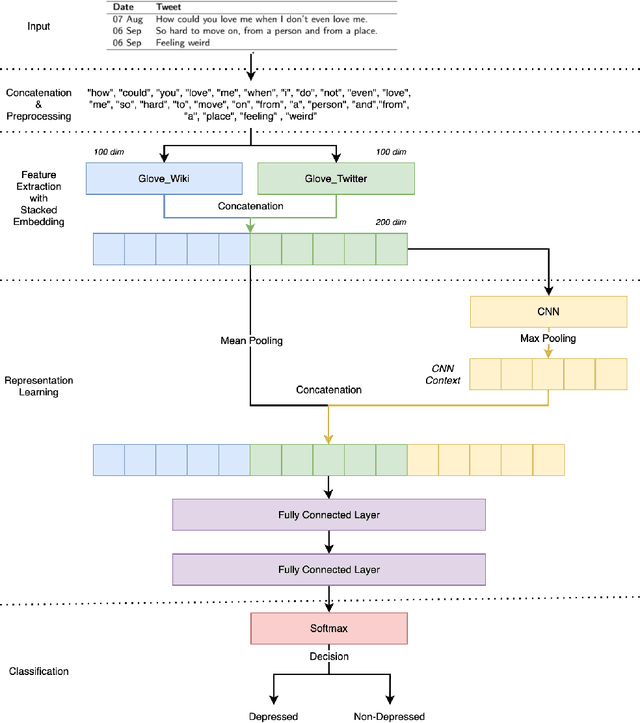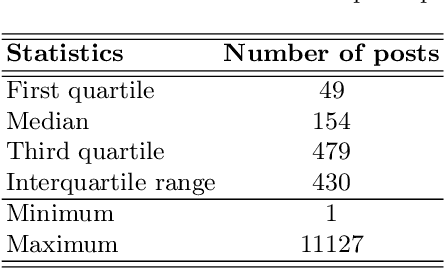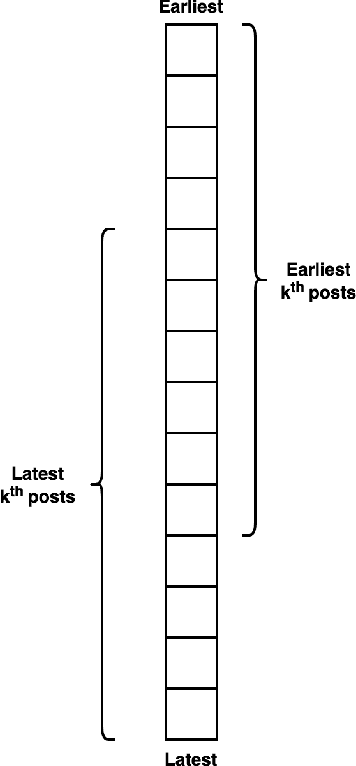SERCNN: Stacked Embedding Recurrent Convolutional Neural Network in Detecting Depression on Twitter
Paper and Code
Aug 05, 2022



Conventional approaches to identify depression are not scalable, and the public has limited awareness of mental health, especially in developing countries. As evident by recent studies, social media has the potential to complement mental health screening on a greater scale. The vast amount of first-person narrative posts in chronological order can provide insights into one's thoughts, feelings, behavior, or mood for some time, enabling a better understanding of depression symptoms reflected in the online space. In this paper, we propose SERCNN, which improves the user representation by (1) stacking two pretrained embeddings from different domains and (2) reintroducing the embedding context to the MLP classifier. Our SERCNN shows great performance over state-of-the-art and other baselines, achieving 93.7% accuracy in a 5-fold cross-validation setting. Since not all users share the same level of online activity, we introduced the concept of a fixed observation window that quantifies the observation period in a predefined number of posts. With as minimal as 10 posts per user, SERCNN performed exceptionally well with an 87% accuracy, which is on par with the BERT model, while having 98% less in the number of parameters. Our findings open up a promising direction for detecting depression on social media with a smaller number of posts for inference, towards creating solutions for a cost-effective and timely intervention. We hope that our work can bring this research area closer to real-world adoption in existing clinical practice.
 Add to Chrome
Add to Chrome Add to Firefox
Add to Firefox Add to Edge
Add to Edge